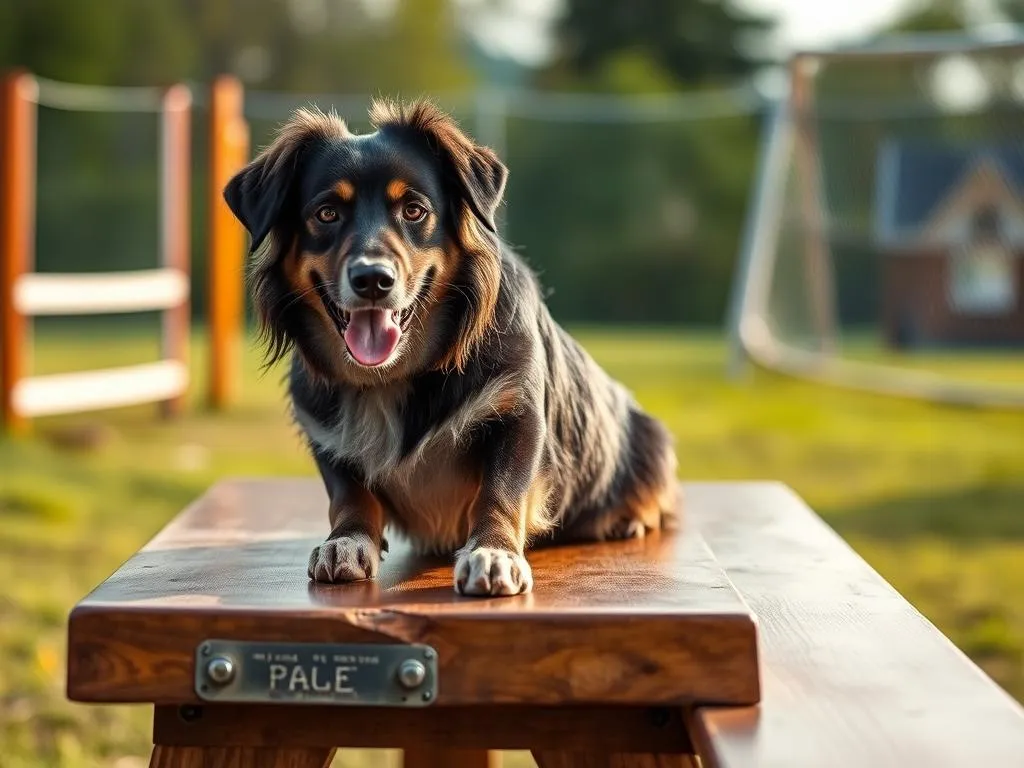
Introduction
Agility training is a rewarding and exciting activity for both dogs and their owners. It not only enhances the bond between you and your canine companion but also provides mental and physical stimulation that can greatly benefit your dog’s overall well-being. Among the various elements involved in agility training, the pause table plays a crucial role, serving as a platform for dogs to demonstrate their focus and obedience during competitions and training sessions.
Agility training involves a series of obstacles that dogs navigate while being directed by their handlers. These obstacles can include jumps, tunnels, weave poles, and, of course, the pause table. The benefits of agility training extend beyond the physical; it also fosters improved communication skills, builds confidence in dogs, and strengthens the handler-dog relationship.
The pause table is a designated area where dogs must come to a complete stop and remain in place for a specified duration. It is an essential component of agility courses, teaching dogs to maintain focus amidst distractions and reinforcing their training in a controlled environment. In this article, we will explore everything you need to know about agility pause table dog training, from understanding the pause table to advanced techniques for seasoned competitors.
Understanding the Agility Pause Table
What is a Pause Table?
A pause table is a raised platform that typically measures 36 inches by 36 inches and is about 12 inches high. It is constructed from sturdy materials such as wood or composite materials, providing a stable surface for dogs to jump onto and remain on during training and competitions. Pause tables are often designed with non-slip surfaces to ensure the safety of your dog during their training sessions.
There are various types of pause tables available on the market, including portable options for easy transport and stationary tables for home use. Some even come with adjustable heights to accommodate dogs of different sizes, making them versatile tools for training.
Why Use a Pause Table?
The pause table is significant in agility courses for several reasons. First, it serves as a checkpoint where dogs must demonstrate their ability to maintain a specific position. This aspect of training reinforces the importance of focus and control, especially in a competitive setting. Additionally, the pause table helps improve a dog’s overall performance by conditioning them to handle various stimuli while remaining calm and collected.
Using a pause table can also lead to positive behavioral changes in your dog. Training with the table can enhance their patience, boost their confidence, and improve their impulse control—all essential qualities for successful agility work.
Preparing for Pause Table Training
Assessing Your Dog’s Readiness
Before starting pause table training, it’s crucial to assess your dog’s readiness. Factors such as age, breed, and fitness level play a significant role in determining whether your dog is prepared for this type of training. Young puppies may require basic obedience training before moving on to agility-specific exercises, while older dogs may need to be evaluated for their physical capabilities.
Choosing the Right Location
Selecting the ideal training environment is paramount for effective pause table training. Both indoor and outdoor locations can work, but consider factors such as space, surface type, and potential distractions. A flat, non-slip surface is optimal, whether it’s grass, sand, or a specialized training mat. Ensure that the area is free from distractions such as other dogs, loud noises, or high-traffic areas, allowing your dog to focus entirely on the training process.
Gathering Necessary Equipment
Before you begin training, gather the necessary equipment to set your dog up for success:
- Leash and collar (preferably a training collar)
- Treats (small, high-value rewards)
- Clicker (for positive reinforcement)
- Optional equipment (target sticks, mats)
These items will help facilitate training and ensure a smooth process for both you and your dog.
Step-by-Step Training Process
Introducing the Pause Table
The first step in pause table training is to familiarize your dog with the table itself. Start by allowing your dog to explore the table at their own pace. Use positive reinforcement, such as treats and praise, to encourage your dog to approach and investigate the table. If they show apprehension, place treats on the table to draw them closer.
Teaching the “Up” Command
Once your dog is comfortable around the table, it’s time to teach the “up” command. Use a treat to lure your dog onto the table, and as they jump up, say “up” enthusiastically. If your dog hesitates, you can gently encourage them with your hand or a target stick to guide them onto the table. Be patient, and always reward them once they are on the table, reinforcing the behavior you want to encourage.
Practicing the Pause Command
After your dog is consistently jumping onto the table, it’s time to teach them to stay in place. Use the command “stay” or “pause” as you encourage your dog to remain on the table. Start with short durations and gradually increase the time you ask them to stay. Introducing distractions, such as other dogs or toys, can help simulate real-life situations they might encounter during agility courses.
Transitioning from Training to Agility Course
Once your dog is comfortable with the pause table, it’s time to incorporate it into agility courses. Set up a simple course with jumps or tunnels leading to the pause table, and practice guiding your dog through the obstacles before reaching the table. Use positive reinforcement throughout the process to solidify their understanding of what is expected.
Common Challenges and Solutions
Reluctance to Approach the Table
If your dog shows reluctance to approach the pause table, it may be due to anxiety or fear. To overcome this, go back to basic desensitization techniques. Allow them to explore the table from a distance and gradually decrease the space between them and the table. Use plenty of treats and praise to create positive associations with the table.
Difficulty Staying on the Table
If your dog struggles to stay on the table, consider breaking the command down into smaller steps. Start with very short durations and gradually increase the time as your dog becomes more comfortable. Implementing a “release” command will also help them understand when they are allowed to leave the table.
Overcoming Distractions
Distractions can be a significant challenge during pause table training. To help your dog maintain focus, practice in a controlled environment and gradually introduce distractions. Start with minimal distractions and slowly increase the difficulty as your dog becomes more confident. Always reward your dog for staying focused and calm.
Advanced Techniques
Speed Training on the Pause Table
Once your dog has mastered the basics, you can start incorporating speed training. Encourage your dog to jump onto the table quickly and reinforce this behavior with treats and praise. Timing your commands can also improve their speed, so be consistent with your cues.
Incorporating Other Obstacles
To create a more engaging training session, integrate the pause table with other agility obstacles. Set up a course that includes jumps, tunnels, and weave poles, leading to the pause table. This will help your dog learn how to transition smoothly between different obstacles, enhancing their agility skills.
Competing with the Pause Table
If you plan on competing, it’s essential to familiarize your dog with the rules and expectations surrounding the pause table in agility competitions. Practice under competition-like conditions, including time limits and distractions. Consider attending local agility trials to gain experience and learn how to manage the stress of competition.
Health and Safety Considerations
Physical Fitness for Agility Dogs
Ensuring your dog is physically fit is crucial for their performance and safety in pause table training. Regular exercise, a balanced diet, and proper hydration are essential components of maintaining your dog’s overall health. Be vigilant for signs of fatigue or injury, such as limping, excessive panting, or reluctance to jump.
Monitoring Your Dog’s Progress
Keeping track of your dog’s training sessions is vital for monitoring their progress. Note improvements in their performance and any challenges they face. Regular evaluations will help you adjust your training techniques and provide insight into when it might be time to consult a veterinarian or professional trainer.
Conclusion
In conclusion, agility pause table dog training offers numerous benefits for both dogs and their owners. It enhances physical fitness, reinforces important commands, and improves the bond between handler and dog. By implementing the techniques discussed in this article, you can set your dog on a path to success in agility training.
As you embark on this exciting journey, remember to remain patient and encouraging. Every dog learns at their own pace, so celebrate small victories along the way. Whether you aim to compete or simply enjoy the process, the skills gained through pause table training will undoubtedly enrich your dog’s life.









